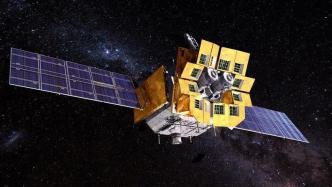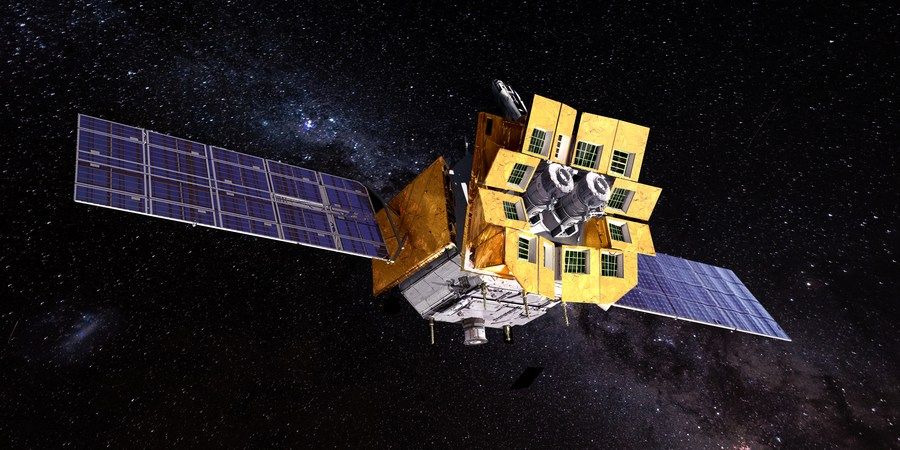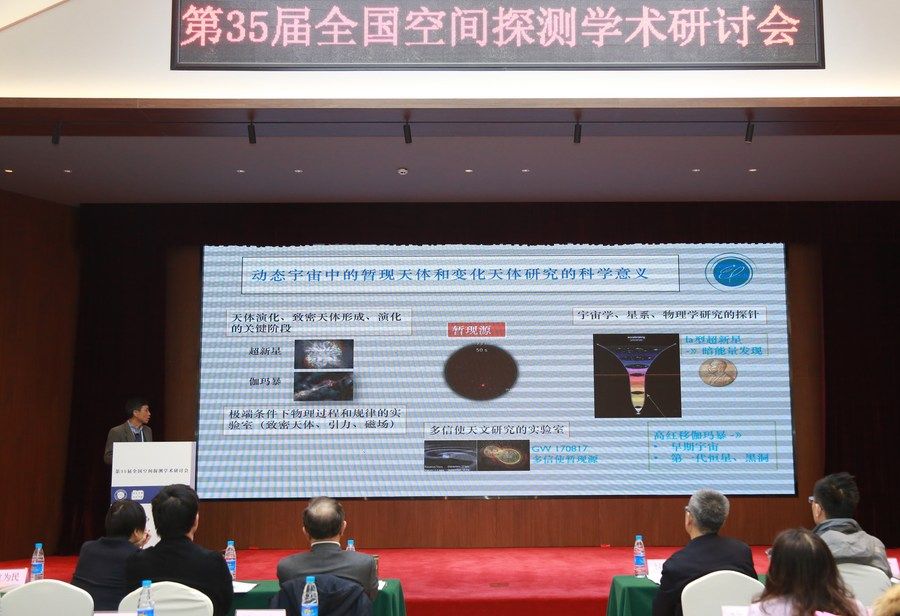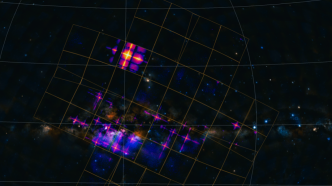

Conceptual image of the Einstein Probe satellite. Published by Xinhua News Agency (Photo provided by Institute of Microsatellite Innovation, Chinese Academy of Sciences)
China plans to launch a new X-ray astronomical satellite, the Einstein Probe, at the end of 2023. It is expected to capture the first rays of light from supernovae, help search and pinpoint the source of gravitational waves, and discover more distant and fainter objects in the universe. Celestial bodies and fleeting mysterious phenomena.
Yuan Weimin, the chief scientist of the Einstein Probe Satellite and a researcher at the National Astronomical Observatories of the Chinese Academy of Sciences, introduced at the recently held 35th National Space Exploration Symposium that the satellite project has entered the final development stage.
Yuan Weimin said that there are many spectacular and magical transient sources and explosive sources in the universe, most of them can radiate huge energy in a short period of time, and present complex brightness changes in the X-ray band, appearing and disappearing from time to time, such as The black hole that is devouring the star, the brilliant "firework" that blooms when the star dies.
"Fast transient sources are produced in the key stages of celestial body evolution and the formation and evolution of compact celestial bodies. We still don't know the physical nature and process of some of them. They are probes for cosmology and galaxy research, and also for exploring physical laws under extreme conditions. laboratory." Yuan Weimin said that X-rays are an important band for the detection of transient sources, but the transient sources that scientists have discovered so far are only the tip of the iceberg in the universe, which requires a large field of view, high sensitivity, high resolution and fast response capabilities A new generation of detection equipment.

Yuan Weimin, the chief scientist of the Einstein Probe Satellite and a researcher at the National Astronomical Observatories of the Chinese Academy of Sciences, introduced relevant information at the 35th National Space Exploration Symposium (photographed on March 1). Published by Xinhua News Agency (Photo courtesy of the Chinese Society for Space Science)
Inspired by the peculiar focusing imaging principle of lobster eyes, scientists have designed a special new type of X-ray telescope, which has a large observation field of view and higher detection sensitivity.
"That is to say, this kind of telescope can see the darker and farther universe while seeing a wide range. It is thanks to the lobster eye telescope technology that the Einstein Probe satellite can see the currently known universe." There are very few soft X-ray bands for large-field, high-sensitivity, and fast time-domain survey monitoring." Yuan Weimin said.
He introduced that many celestial bodies in the universe have soft X-ray radiation, and the sensitivity of the Einstein probe is relatively high, so the detection target of this satellite is very wide. Its core scientific goal is to discover the X-ray transients in the universe discover and drastically change celestial bodies, and monitor the activity of known celestial bodies; explore the properties and related physical processes of these celestial bodies and phenomena; discover and explore the flares of silent black holes in the universe; map the distribution of black holes, and further understand their origin, evolution and how to absorb accumulating matter; searching for X-ray signals accompanying gravitational wave events to improve understanding of extremely compact objects and their merger processes.
The X-ray Imaging Laboratory of the National Astronomical Observatory of the Chinese Academy of Sciences has been developing lobster eye X-ray imaging technology since 2010. After years of key technology research, it finally made a breakthrough, fully mastered the technology, and has completely independent intellectual property rights. The team carried out the test and verification of this technology on the space new technology test satellite launched in July 2022, and obtained and publicly released the wide-field X-ray focused imaging sky map for the first time in the world.
Paul Bryan, a well-known expert in this field and a professor at the University of Leicester in the United Kingdom, said that this technology will bring a transformative boost to cosmic X-ray monitoring, and it also shows the huge scientific potential of the Einstein probe.
According to reports, the Einstein Probe is another space science satellite developed by the Chinese Academy of Sciences Space Science Pioneer Project II following the "Taiji-1", "Huairou-1" and "Kuafu-1". European Space Agency, Germany The Max Planck Institute for Extraterrestrial Physics and the French Space Agency are jointly involved in the satellite project.
